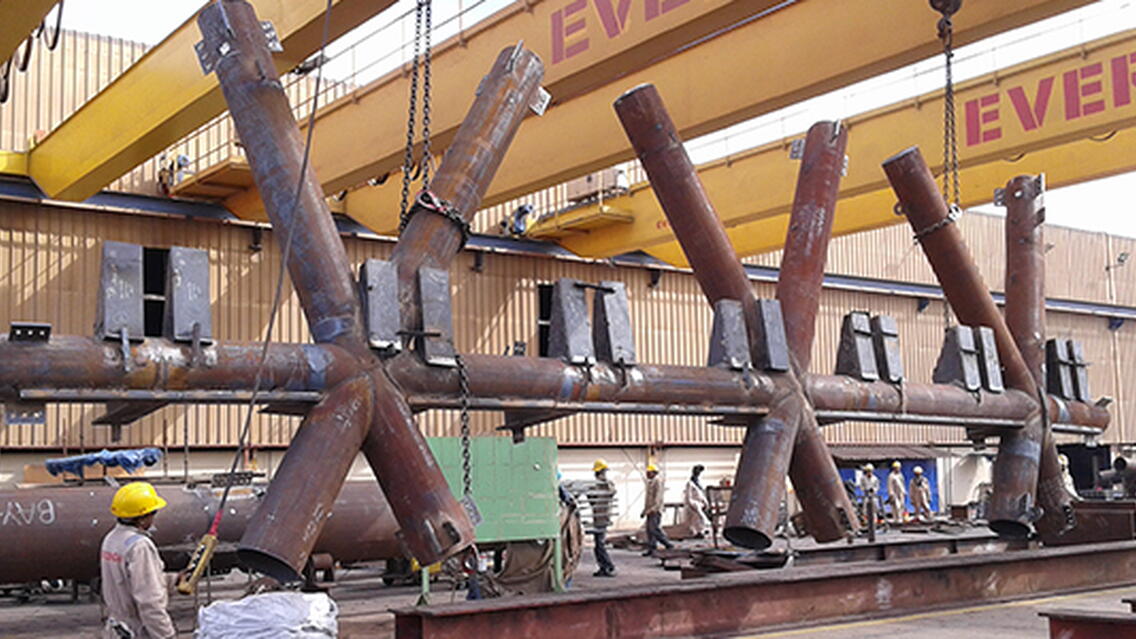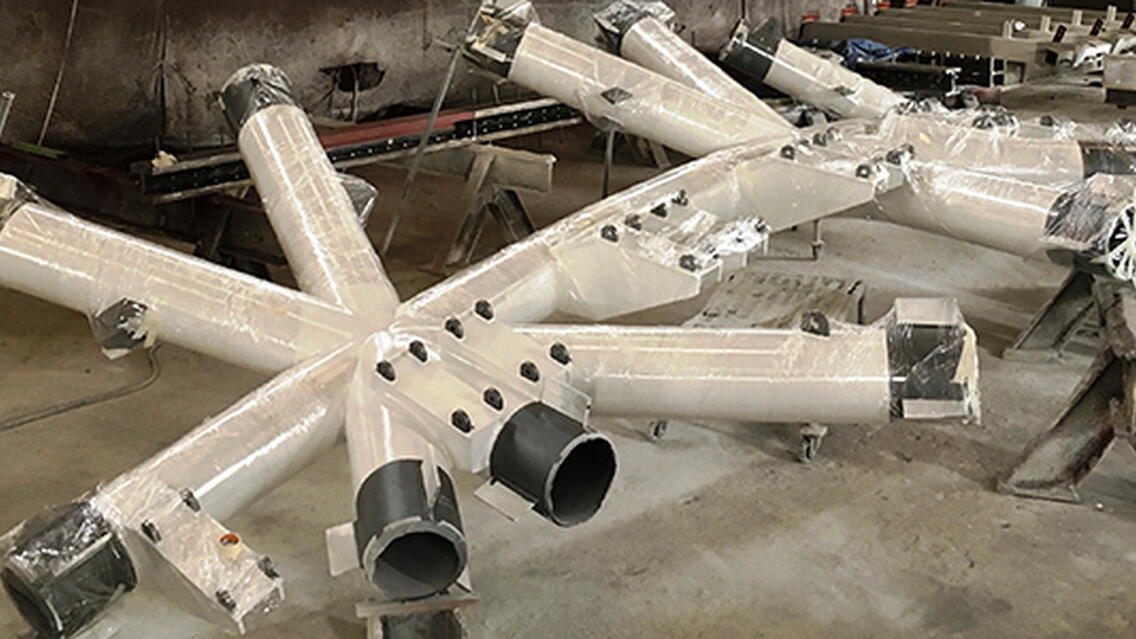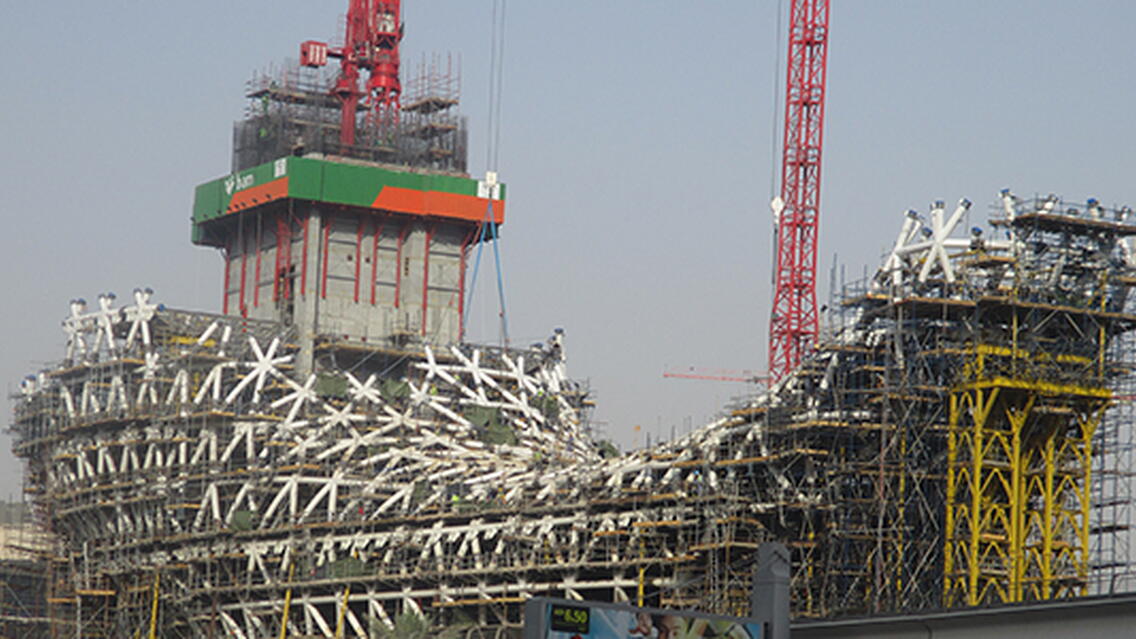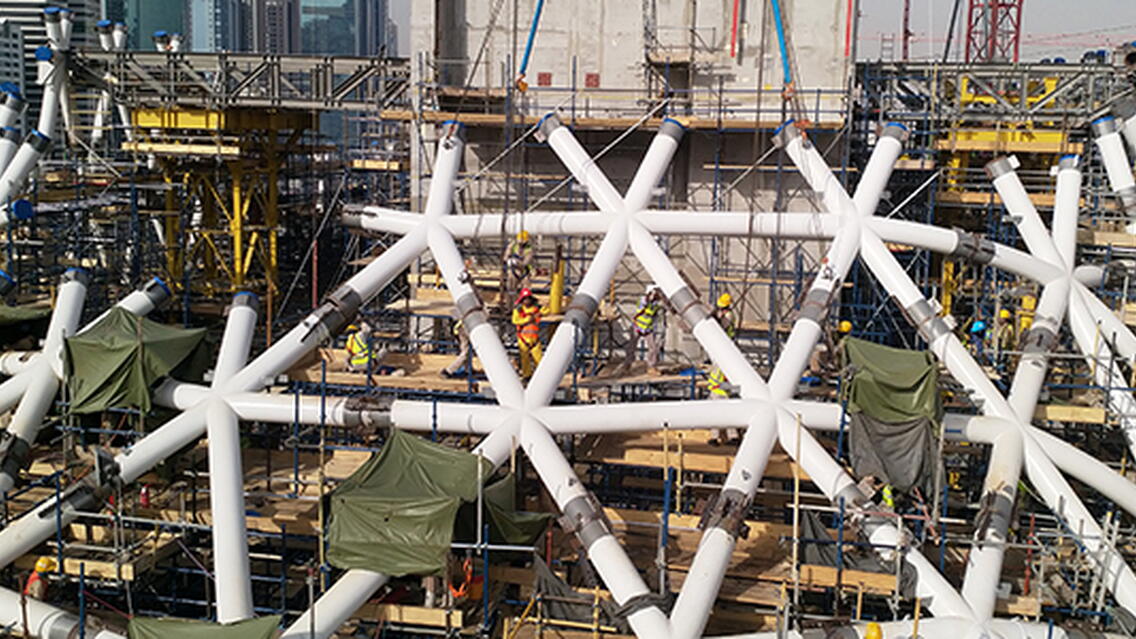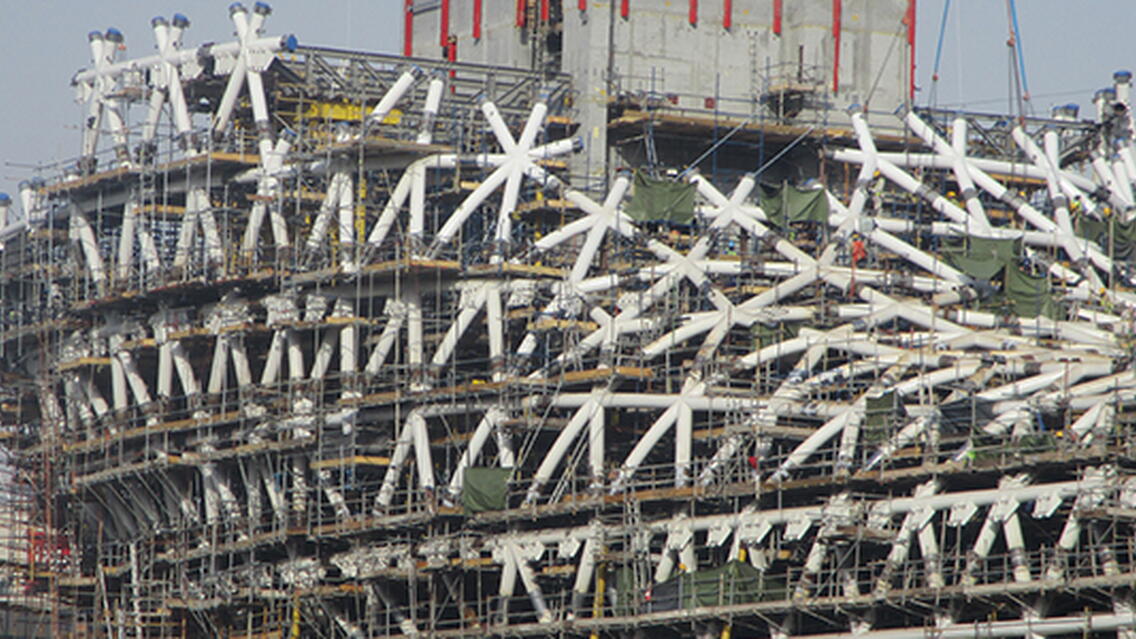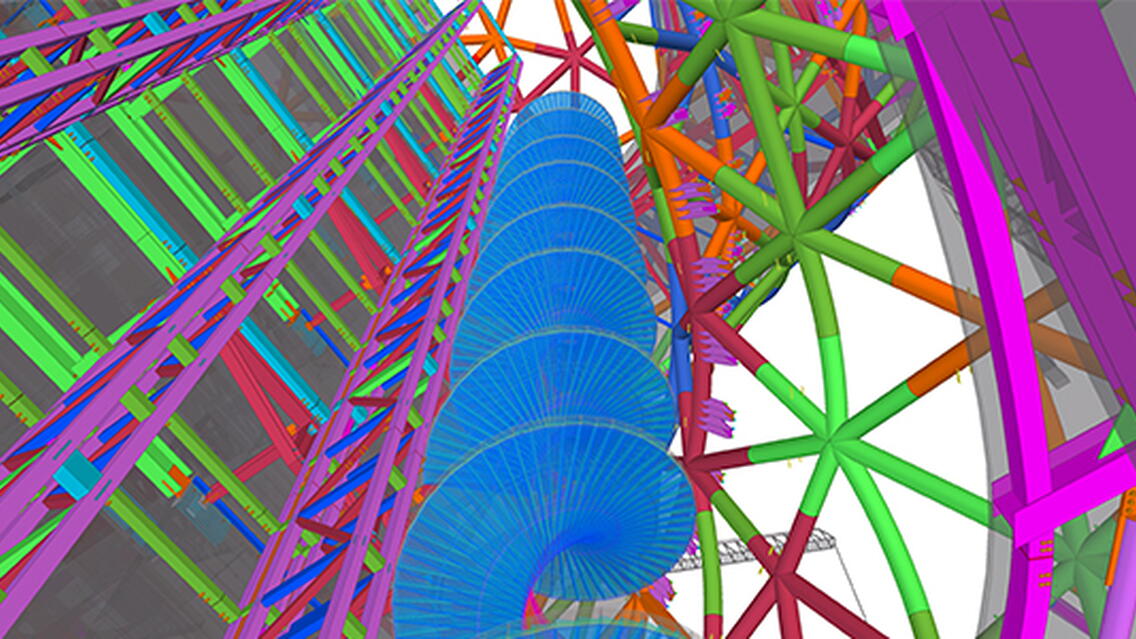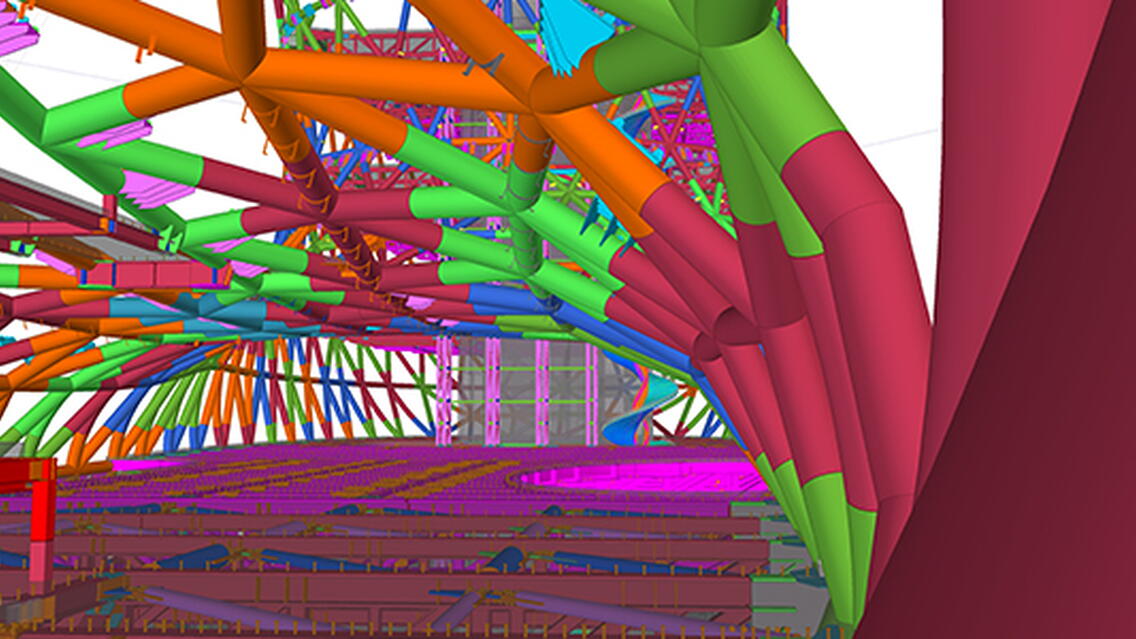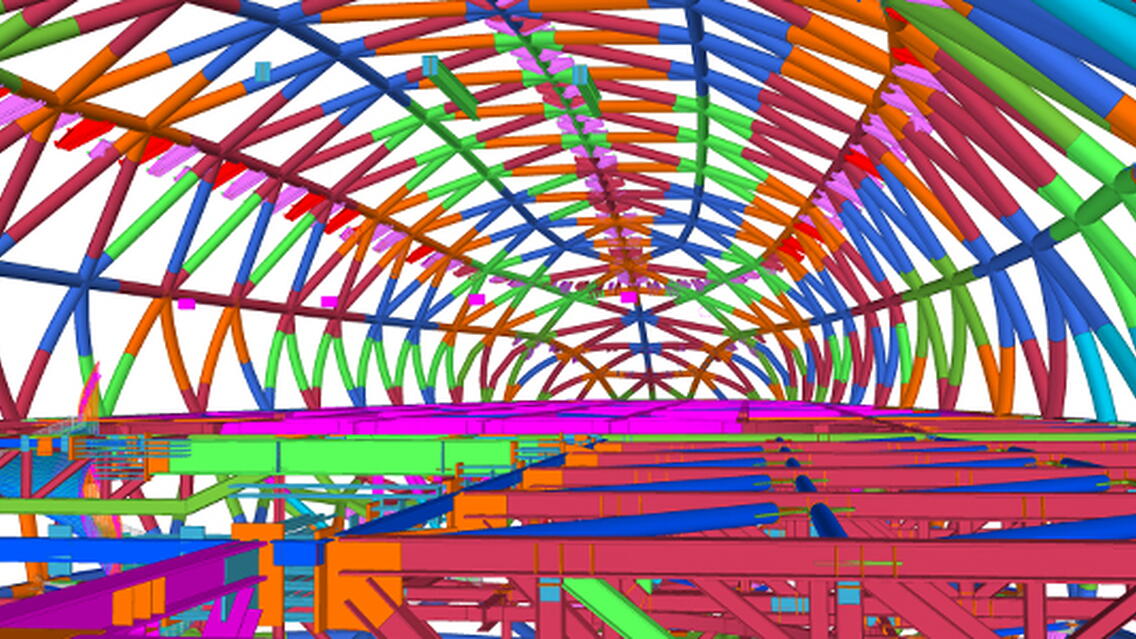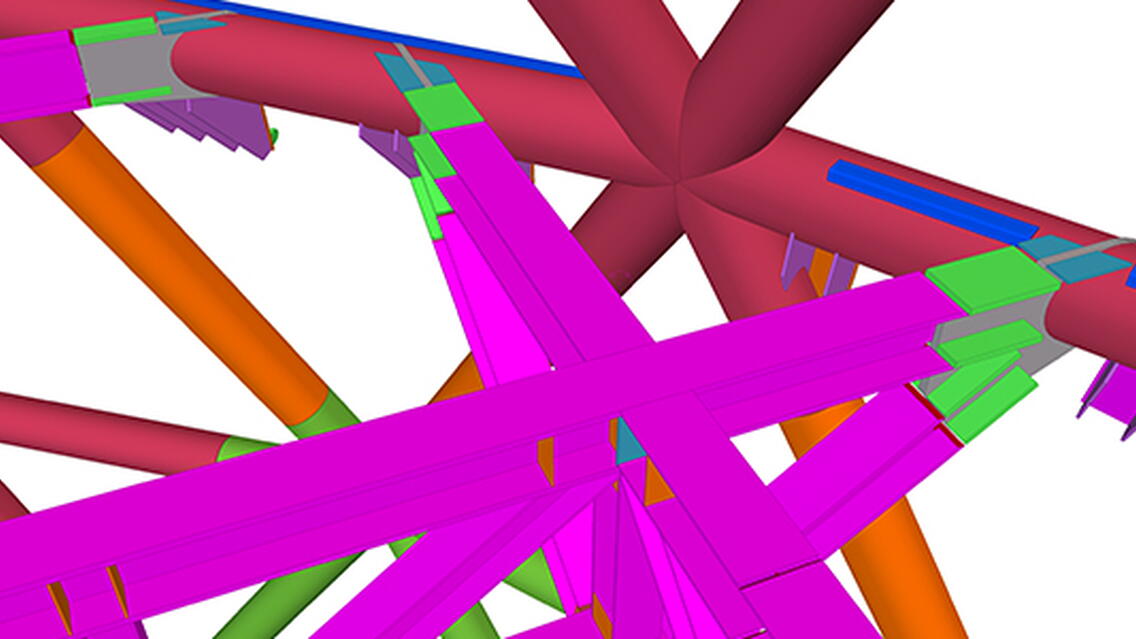“The Museum of the Future stretches structural engineering to its limits and showcases the creativity of what is possible using innovative modeling technology. Tekla was the ideal BIM program to complete the museum and have the kind of detailing and tolerances that are needed in order to construct such an elaborate building.” - Member of the selection commitee, Elbert O. Speidel, A.I.A. Professor at CalPoly
The project
Eversendai’s scope was to provide connection design, shop drawings, BIM implementation & coordination, erection engineering study & stage analysis, workshop fabrication drawings, supply, fabrication, painting, fire proofing, composite floor decking, and erection of structural steel works. All of the above scope of works is being executed successfully by Eversendai in line with project schedules.
The Project Client is Dubai Future Foundation & Development Manager is Meraas & Employer’s Representative and Project Manager is Matthews Southwest Developments, The Architect is Killa Design and Structural Engineer is BuroHappold, Cost Consultant is AECOM and the Main Contractor is Bam Higgs & Hill.
The Museum of the Future is primarily an exhibition space, which will exhibit innovative and futuristic concepts, services and products, with various other science labs, F&B outlets as well as an auditorium.
The Museum of the Future is indeed a complex project, with a concrete structure from the basement to the top. This supports a steel diagrid structure up to Level 7, with composite concrete floor slabs. This design approach allows a column-free interior space, because of which the building's steelwork consists of a number of different elements, each with its own challenges.
Complex connection design
All of the connection design is the responsibility of Eversendai based on tabulated data issued by the design team. Given the complexity of the design, the team had 12 structural models in total, for which they created envelope cases for the connection loads. This resulted in an enormous amount of data and load combinations to be considered during the design of connections. The data was analyzed in a number of configurations, using FEM design to determine whether or not stiffeners were required, as well as the sequence for the welding of the nodes in order to transfer the forces. In the end, the connections were designed without punch plates looking majestic like garlands of jasmine.
The podium link bridge was another example of design and fabrication challenges as this bridge had to be stiff enough to restrain the top of the feature stair, while also being capable of being fabricated. There were transportation and site restrictions as well, plus lift capacities required welded site splices.
Erection stage
As part of the erection design responsibility, Eversendai demonstrated the impact of their chosen approach for the erection of the steelwork. As the design was based on an instantaneous erection of the steelwork when it was modeled on Tekla software. This was with an allowance made for locked-in stresses due to the phased erection of the building and would result in both locked-in deflections and locked-in stresses, which had to be calculated and checked against the design allowances.
Each and every node of the structure is modeled with three-dimensional preset against expected deflections at the construction stage due to intrinsic weight.
Why Tekla?
Considering the complex geometry, nature and precise interface requirements with various trades, the BIM Implementation with Tekla and the coordination played a vital role in successful completion of this project. Tekla BIMsight was used extensively to identify the clashes with other trades like roofing, facade, MEP and RCC contractors, and these clashes were resolved in the design stage itself.
